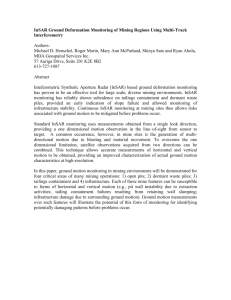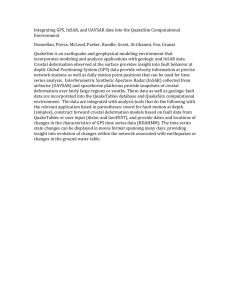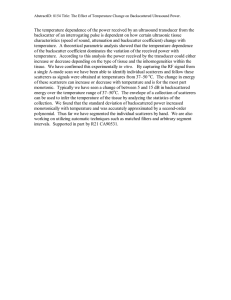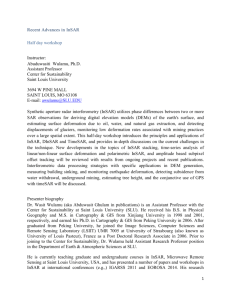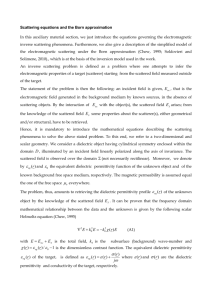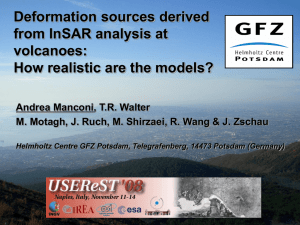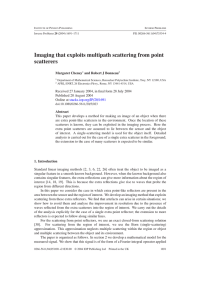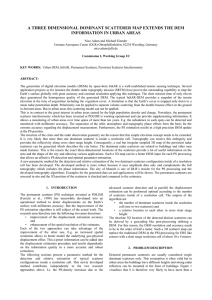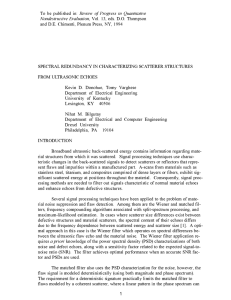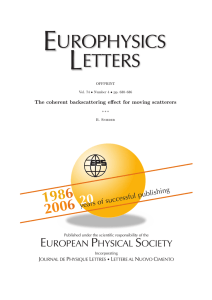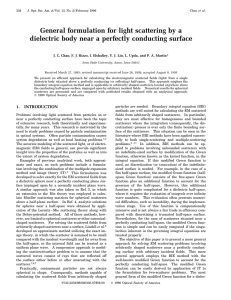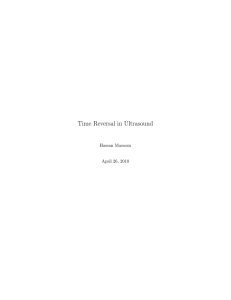InSAR Remote Sensing Over Decorrelating Terrains: Persistent Scattering Methods
advertisement
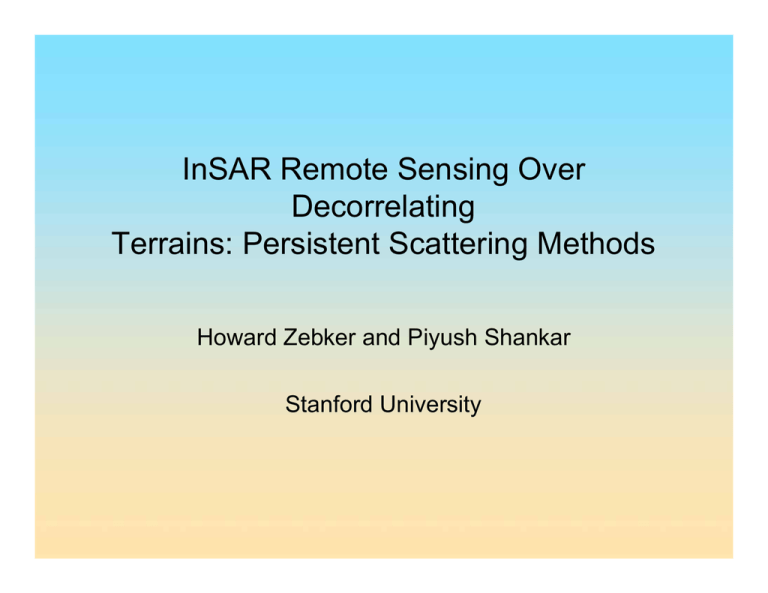
InSAR Remote Sensing Over
Decorrelating
Terrains: Persistent Scattering Methods
Howard Zebker and Piyush Shankar
Stanford University
Plate tectonics
Plate motions
Historical
plate
motions
Traditional dating of tectonic activity
• Similar arguments for isotope/chemical evidence
Elastic rebound
Interseismic (years)
locked
Coseismic (seconds)
Slip on fault
Corresponding
surface
displacement
After H. F. Reid, 1910, from
Jessica Murray
Interferometric Synthetic Aperture Radar
(InSAR)
Spaceborne radar satellites
Multiple observations of surface
• Simultaneously
• Spaced in time
Applications
• Hi-res topography
• Motions
• Crustal deformation
InSAR method
Phase changes from
• Parallax
• Motion of points between
observations
Measure changes to /100
• m-scale topography
• cm-scale motions
Imaging geometry
Example interferogram
InSAR applications
Ocean waves
and currents
Volcano deformation
Utah front range
JPL SRTM Project
Interferograms over vegetated terrain
San Francisco Bay Area
Scattering model:
Decorrelation arises from speckle
• Received signal is sum of echoes from many discrete
scatterers
Decorrelation sources
Observing
system
Change in
incidence
angle
Distributed
scattering
pixel
Movement
of scatterers
Quantifying decorrelation
With movement:
With angle:
1
Correlation
2
spatial = 1
2 B R y cos r
2
1 4 temporal = exp 2 {
(
2
y
sin 2 + z2 cos2 )
}
0
Baseline length
(B)
Random surface motion
y, z
Persistent scatterers
Distributed
scattering
pixel
2
0
-2
Phase
(rad)
Single
dominant
scatterer
Single
scattering
center
1
2
0
-2
3
2
0
-2
10
Amplitude
of dominant
reflector
Original permanent scatterer method
Ferretti et al., 2000 - Amplitude dispersion as proxy for phase noise
2
μ
Amplitude dispersion ( -- )
or
Phase standard deviation
1.8
Speckle observed as
image amplitude variation
1.6
1.4
1.2
1
Phase standard deviation
0.8
0.6
0.4
0.2
0
Amplitude dispersion
0
10
20
30
Power(dom. scatterer)
Power(dist. scatterers)
40
50
Original permanent scatterer method
San Francisco Bay Area
Algorithm finds bright PS
Ferretti et al., 2000
Amplitude dispersion ( -- )
μ
Problem with amplitude dispersion proxy
1
PS?
0.8
Amplitude dispersion uncertainties
0.6
0.4
0.2
0
0
10
20
30
Power(dom. scatterer)
Power(dist. scatterers)
40
50
Maximum likelihood method
1. Probability density function
of interferogram phase:
2
1 1
p( ) =
2 1 2 cos 2 cos arccos( cos ) 1+
2
2
1 cos P(1, , k | ) P( )
P(1, , k )
2. Conditional probability of given
phases from Bayes’ rule:
P( | 1, , k ) =
3. Estimate maximizes the product:
P(1 | ) P( k | )
Maximum likelihood finds many more scatterers
San Andreas fault
Maximum likelihood finds many more scatterers
Hayward fault
Time series resolves temporal deformation
Long Valley Caldera
Management of natural resources
Oil production - Lost Hills, CA
Surface
displacement
Fault slip
Fault slip
Reservoir
compaction
1 fringe = 2.8 cm subsidence
Fault slip
Summary
•InSAR measures fine-scale motions precisely
•Persistent scatterer method permits use in vegetated regions
•Maximum likelihood estimation yields dense network
•Can now identify/monitor crustal change worldwide from space
Subsidence in Las
Vegas Valley, 1992-97
Inference of stress change
Hector Mine Earthquake
Fialko et al., 2002
Static shear stress change
Static normal stress change
Volcanic mechanical modeling
Space
measurements
Jonsson et al., 2005
Mechanical model - Sierra Negra
Landsliding in Berkeley Hills, CA
Adjusted range rate
(mm/yr) >7.0
-1.0
Landslides appear
clearly in InSAR maps
Rates increase in
years with greater
precipitation
Can be mapped by
small (<1 mm)
motions
Hilley et al., 2003
InSAR Satellites
ERS
Envisat
ALOS
Radarsat
InSAR Platforms
Major SAR sensors
Sensor /
characteristic
JERS
ERS 1/2
Envisat
Radarsat ALOS
Country
Japan
ESA
ESA
Canada
Japan
Time
coverage
1992-1998
1991-2004
2002-
1995-
2006-
Wavelength
L-band (24
cm)
C-band (6
cm)
C-band
C-band
L-band
Orbit repeat
44 days
35 days
35 days
24 days
46 days
